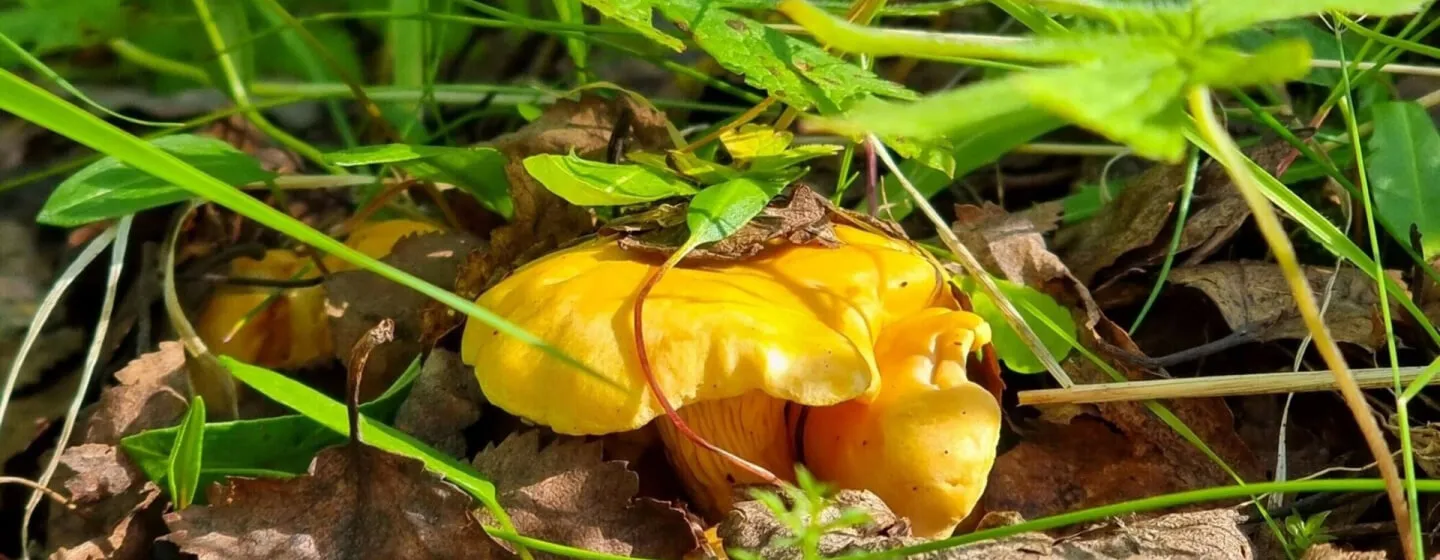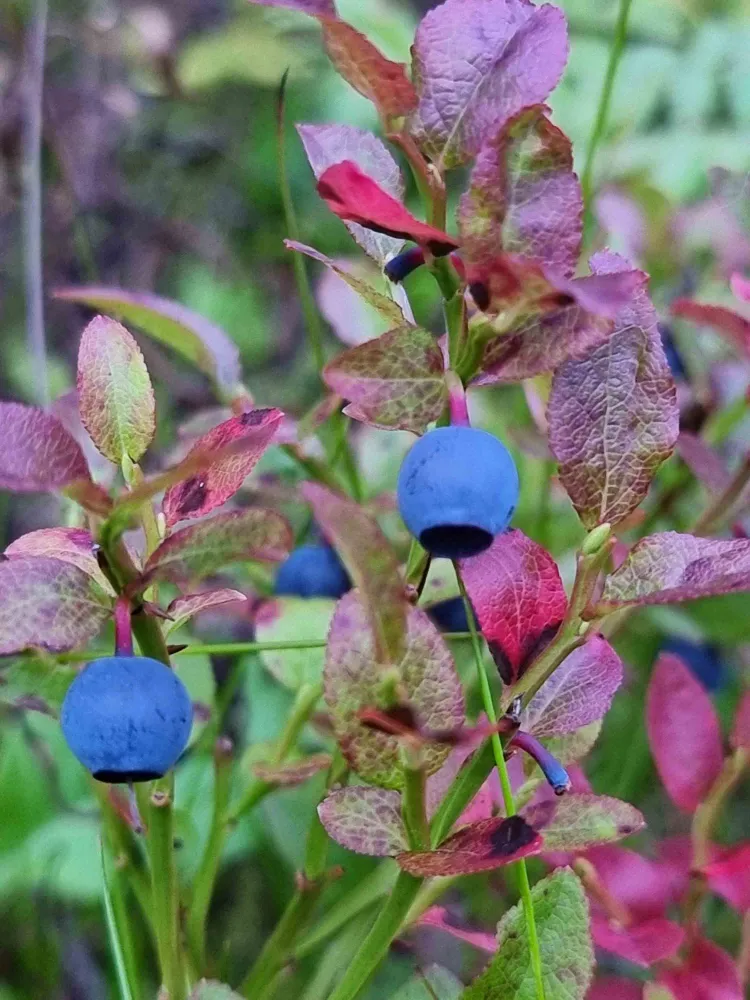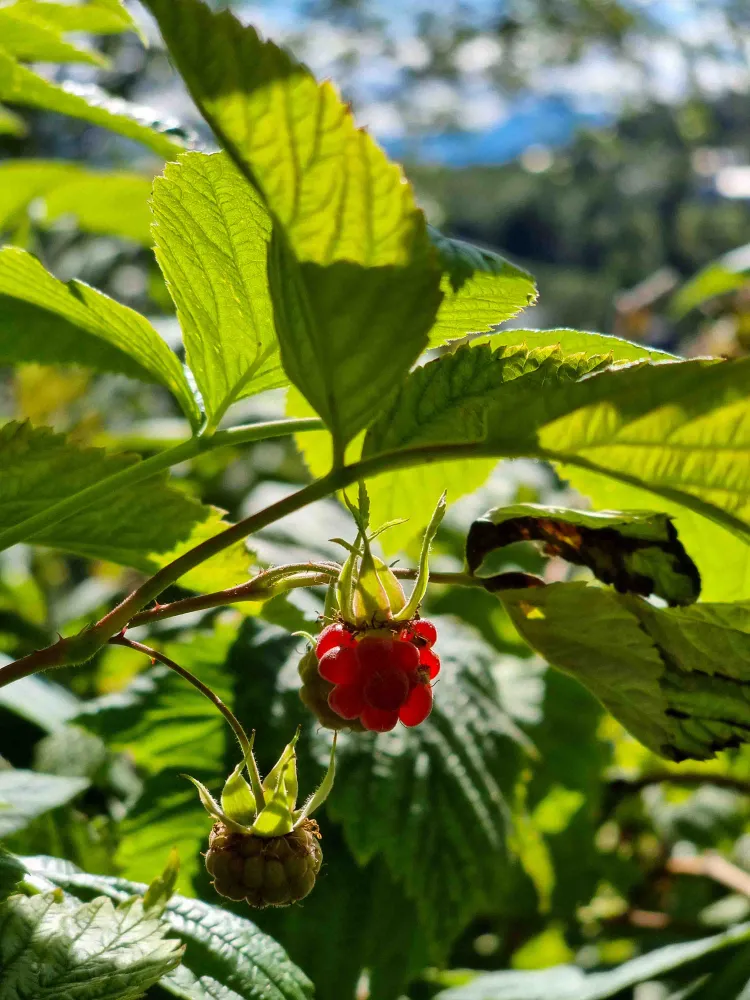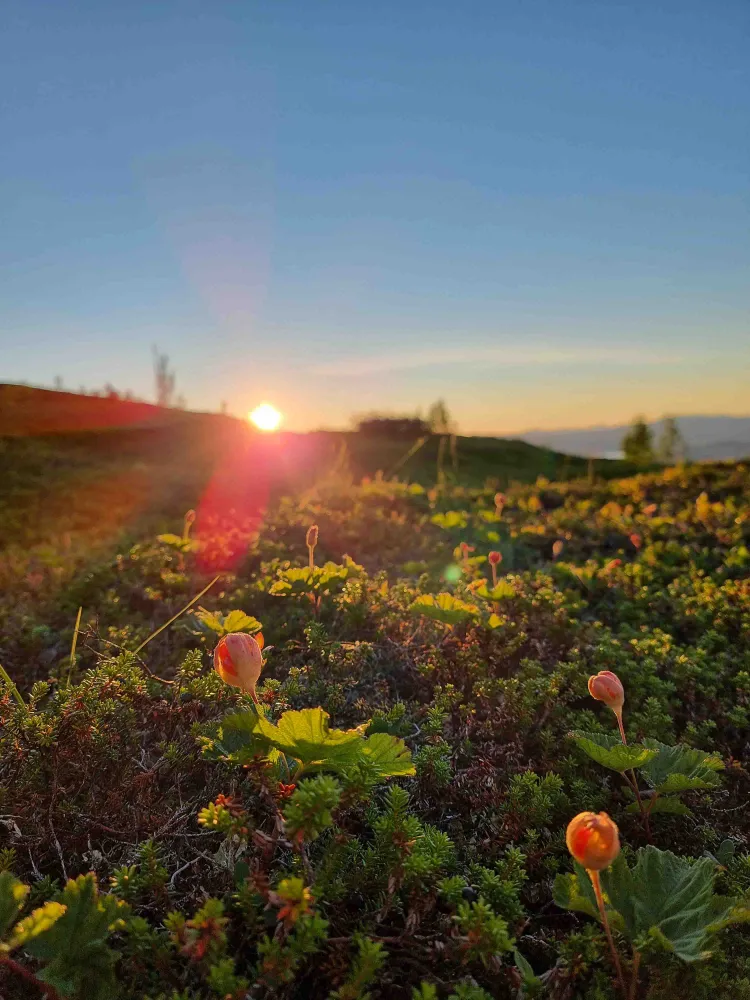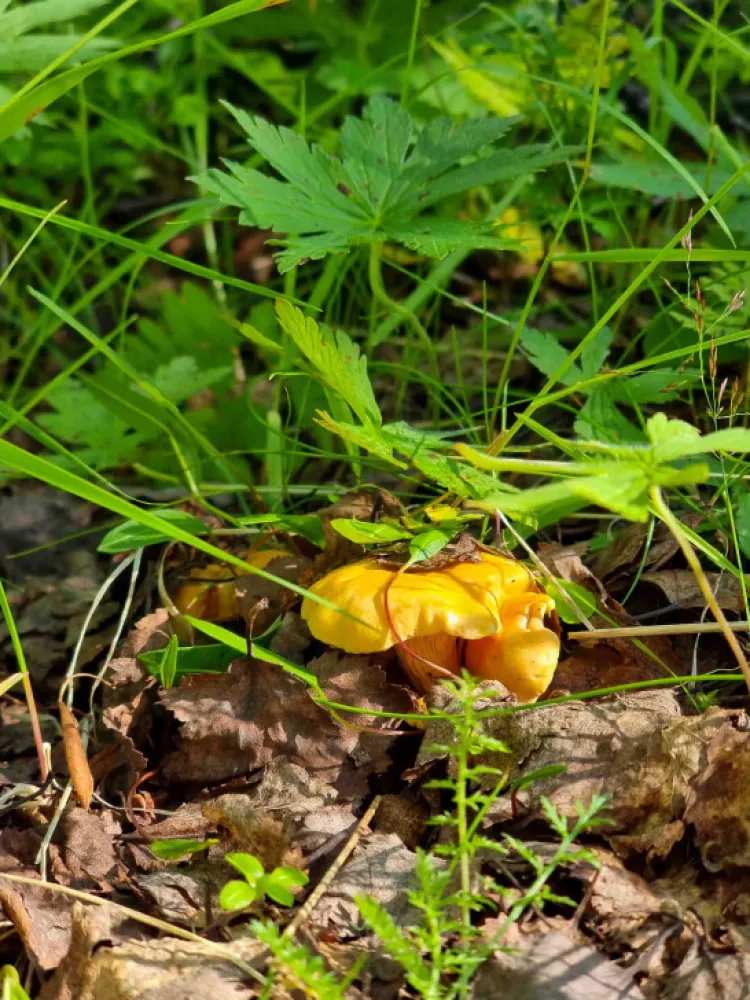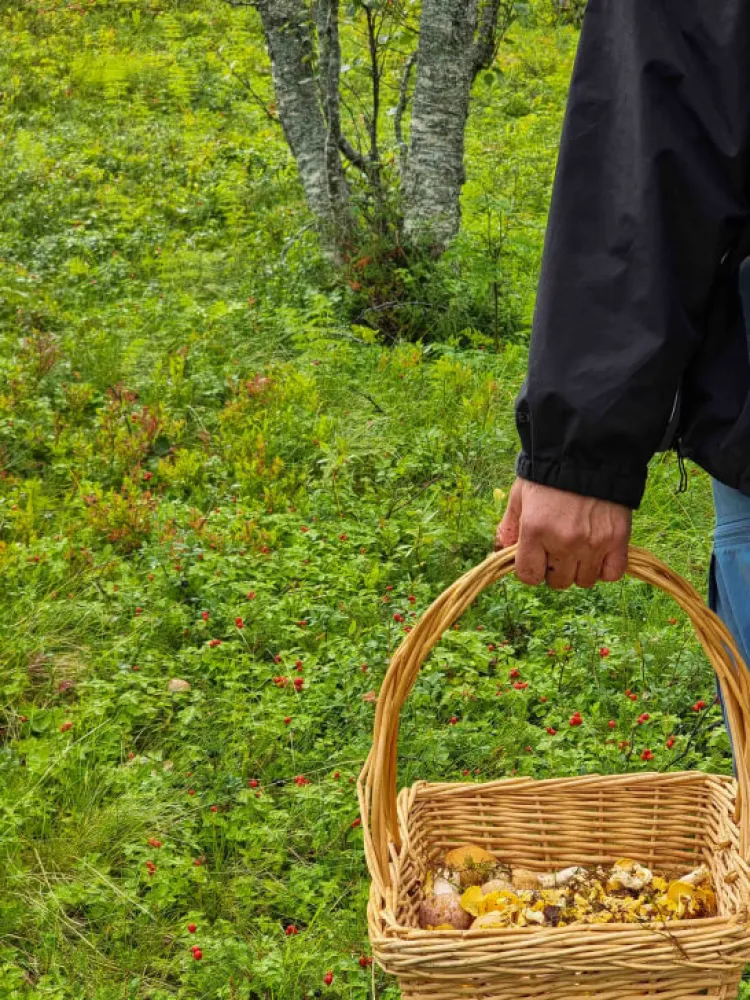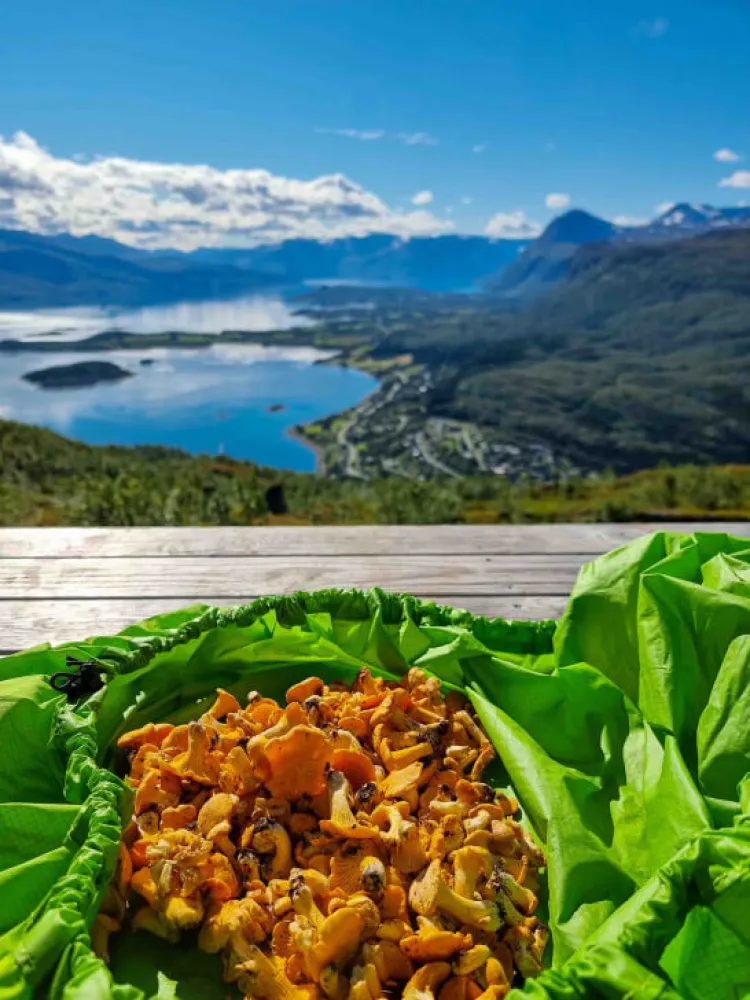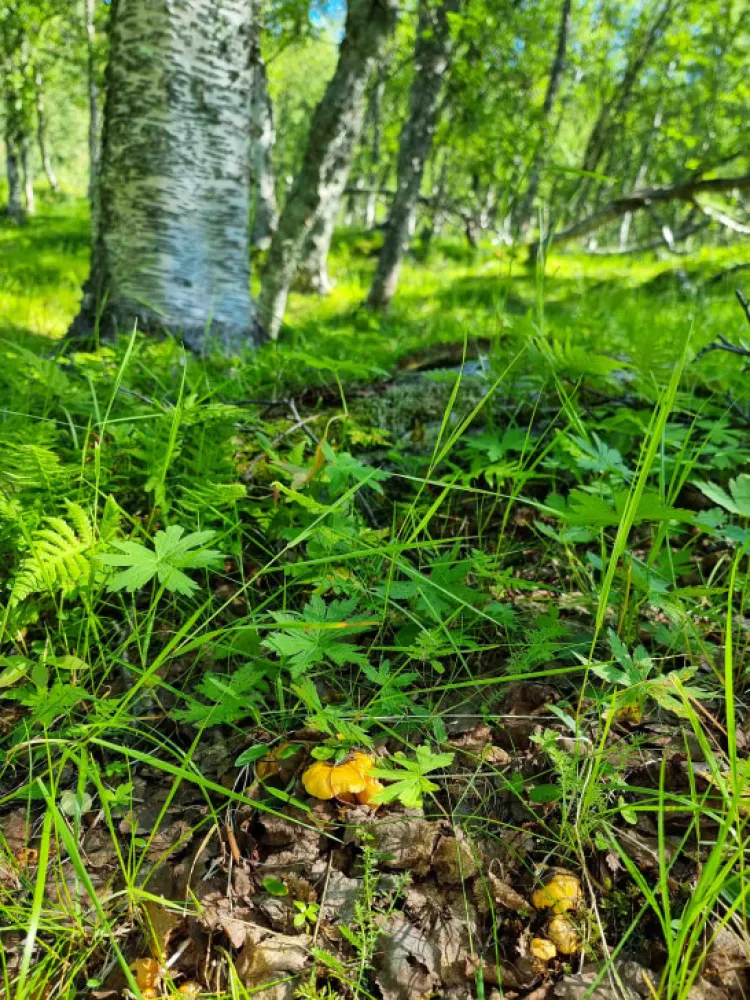Urban experiences meet raw Arctic nature
Mushroom and berry picking
Autumn is the time for tasty outdoor recreation
Imagine being able to take nature home and eat it! In autumn, the Tromsø wilderness is brimming with wild mushrooms and berries. You can pick and eat as many as you like and, best of all, it’s completely free.
The Outdoor Recreation Act states that while accessing uncultivated areas, like forests and mountains, you can freely harvest wild berries, mushrooms, flowers and herbs. This public right to harvest is a central part of Norway’s right of public access or right to roam.
This right to freely harvest from nature’s pantry is the reason why so many locals often go on autumn picking and gathering trips in the beautiful Tromsø region. It’s like we are finding our primal instincts. Equipped with buckets, berry pickers and mushroom baskets, we head out to harvest before winter. We prefer to head out with close friends or family, a packed lunch and a thermos of coffee. This tradition dates back centuries.
After all, there are many good reasons to head out into the wilderness in search of mushrooms and berries. Firstly, they taste heavenly, especially when you have picked them yourself! It also adds an extra dimension or meaning to your outing. Everyone knows that hiking or walking in the forest and mountain is beneficial for your health. You feel calmer and, to put it simply, walking in the countryside makes you happier. As a bonus, you return home with buckets full of delicious, edible delights.
Does it get better than that?
Useful information about picking wild mushrooms and berries in Northern Norway
- The mushroom and berry season is in the autumn (August to October)
- The duration of the season varies from year to year, depending on the weather, precipitation and when the first frost comes.
- The most popular berry varieties are blueberries, cloudberries and lingonberries. NB: Separate rules may apply for picking cloudberries on private land.
- Three delicious edible mushrooms grow in the north: hedgehog mushrooms, chantarelles and porcini (aka penny buns). NB: Poisonous and inedible mushrooms grow all over Norway. Be careful. Only eat mushrooms you are 100% sure are safe.
- Remember to take extra clothes in your backpack. GPS and a map are also sensible.
- Don’t set off on hikes that are too demanding for you. The weather is fickle and can change quickly.
- For more information and tips, feel free to contact Visit Tromsø’s tourist information centre.
The further north you go, the sweeter the berries
Cloudberries, blueberries, crowberries, lingonberries and wild raspberries are five tempting varieties of berries that can be found in our region. You don’t have to go far from downtown Tromsø before you are surrounded by wilderness where there are more than enough berries for everyone.
Blueberries are the easiest to find because they often grow in large bunches. Sometimes known as bilberries, they are chock full of antioxidants and are a real superfood. They are delicious and serve as wonderful ingredients in everything from muffins to jam and juice. Another option is to put them straight in your mouth! Blueberries ripen in July/August.
Another and more exclusive berry variety is the cloudberry, offer called the “Arctic gold” or “gold of the mountain plateau”. North Norwegians are known as keen cloudberry pickers. This comes as no surprise because cloudberries are juicy, delicious and nutritious. Many serve them with traditional desserts on Christmas Eve or use them in jams and cakes.
You may encounter restrictions when it comes to picking cloudberries. If the cloudberry marshland is marked as a private area, you need the landowner’s permission to pick the berries and take them home. This applies in Nordland, Troms and Finnmark. However, it’s worth noting that you are always allowed to pick cloudberries and eat them on the spot, regardless of whether you are on public or private land. We recommend that you familiarise yourself with local regulations. Cloudberries ripen in late July/August.
Crowberries, sometimes called black crowberries, often grow high in the mountains. They don’t have much taste but are suitable for juice and jam. The crowberries often taste better the further north you go, especially after a night of frost. Crowberries ripen in July/August.
If you want to pick wild raspberries, you will need to be patient because they are not one of the most common berry varieties this far north. However, if you are lucky enough to find these small, sweet berries growing on thorn bushes, you can use them in juice and jam. Even better, you can eat them straight from the bush, but you may be there for a long time! Raspberries ripen in July/August.
Last, but not least, autumn is the peak season for picking lingonberries. The lingonberry is called “Norway’s folk berry” and it’s not without reason. The lingonberry is an important ingredient in Norwegian cuisine. It’s used in jams and desserts and served with meat dinners like meat cakes, moose burgers and roast reindeer. Some claim it tastes a bit bitter but that can easily be resolved by adding sugar. Lingonberries ripen in September/October.
All the edible berries found here in the north ripen slowly owing to the low temperatures throughout the summer. The Midnight Sun ensures that it’s light around the clock, which is also good for the ripening process. Quite simply, they become sweeter than berries further south.
Pretty exotic, right?
Hunting for mushrooms
Find your basket and mushroom book and put your boots on! Join us on a treasure hunt for chanterelles, porcini mushrooms and hedgehog mushrooms. These are three of our most common edible mushroom varieties and can be found nationwide. All three are tasty and are a great ingredient in many dishes. We assure you that the aroma of freshly fried wild mushrooms is wonderful.
Remember that you must never eat mushrooms or other plants unless you are 100% certain that they are edible and not poisonous. You will find more information about this further down in this article.
Norway’s most popular mushroom to pick is the chanterelle, which is easily recognisable. This yellow mushroom grows in deciduous and coniferous forests. The chanterelle is funnel-shaped and forked folds run almost all the way down its stalk. It has a fruity smell, a spicy taste and is rarely worm-eaten. The chanterelle may be confused with the “false chanterelle”, which is not poisonous, but not edible either.
Chanterelles are delicious in casseroles, soups, creamy or stewed mushrooms or crispy as a topping on a slice of bread.
Even though the chanterelle is popular, most mushroom enthusiasts agree that the porcini is more aromatic and exclusive. The porcini mushroom (also known as the penny bun) is considered one of the best edible mushrooms. Like other bolete mushrooms, the porcini mushroom has tubes extending down from the underside of the cap, like a sponge. It may be confused with other boletes. Although no boletes in Norway are poisonous, not all should be eaten.
The taste of porcini mushrooms is reminiscent of hazelnuts. There are many options when it comes to using porcini mushrooms, including in soups, sauces and or as a pizza topping.
The third tasty edible mushroom variety is hedgehog mushrooms. Pale and reddish-yellow varieties of the mushroom can be found. They smell like orange and are characterised by spikes on the underside of the cap. As the hedgehog mushroom has no double, it’s one of the safest mushrooms to pick. It’s lovely in pasta, preferably combined with tomato and garlic.
Chanterelles, porcini and hedgehog mushrooms are relatively safe mushrooms, as they don’t have poisonous doubles. However, there are also numerous inedible mushrooms and mushrooms that are poisonous. Consequently, it’s important to know which variety of mushroom you have picked. To be on the safe side, it’s a good idea to get someone else check the first few times.
Sopp- og nyttevekstforbundet (The Norwegian Mushroom and edible plant association) has mushroom inspection sites all over the country, throughout the mushroom season. You can take mushrooms to one of these sites and get an expert to check whether they are safe to eat. Check here for an overview of your nearest inspection site (in Norwegian only). You can also download the “Digital Soppkontroll” app, which enables you to upload photos of mushrooms and get experts to answer whether they are edible or not.
You can also contact the Tromsø Soppforening (mushroom association) if you have any questions about mushrooms in the Tromsø region.
Remember: Never eat raw mushrooms. All mushrooms must be heat treated. Throw away all worm-eaten or rotten mushrooms.
If you suspect mushroom poisoning, contact the Norwegian Poisons Information Centre on +47 22 59 13 00 (24 hours). You can read more about poisonous mushrooms in Norway and download a brochure in a choice of 25 languages.
Good luck! Enjoy the delights of autumn!
